DAI - KATANA: Magnificent Tachi Mumei blade in Koshirae with Shirasaya (Tsunagi, Bukuro), certified and attributed to Sue-Mihara. Beautiful Hamon Suguha, old polish in excellent condition.
• N.B.T.H.K certificates: Type Hozon - No. 3023830 - Date: July 25, 2020.
• Mumei (unsigned): Attributed after expertise inscribed on the Saya (Sayagaki) by Sato Kanzan, to Sue Mihara, Tembun Period.
• Date: 1532-1555
• Blacksmithing school: Sue-Mihara - Location: Bishu/Bingo Mihara (currently Hiroshima).
• Period: Muromachi - Era: Tembun, also called Tenmon FEATURES
• Total blade length: 82.6cm • Nagasa: 65.3cm • Weight: 541grs • Sori: Height: 1.7 cm - Type: Koshi-zori
• Mekugi-ana: 2
• Nakago type: Standard, Futsu-gata - Length: 17.5cm - Extremity type: Kiri - Ichimonji - Yasurime: Kiri - Ichimonji
• Mune type: Iori mune
• Nagashi (marks of the Togishi (polisher) present on the blade
• Sugata type: Shinogi-zukuri
• Grooves: No-hi (without)
• Jihada type: Ko-Mokume Hada • Hamon type: Chu-Suguha in Nioi • Kissaki type: Chu-kissaki
• Type Boshi: Tachi Suriage's blade (cut) erased the Ko-maru Boshi to make way for a Yakutsime.
• Steel type: Tamahagane
• Defects: Very nice polish in excellent condition with a few minor defects and scratches.
KOSHIRAE
• Very good quality and in very good condition. The Koshirae is in very good condition with normal wear as with all items of this age.
• With Tsunagi wooden blade
• Tsuba: Type: Naga-Maru-gata (Oval). Material: Copper alloy, with inlays covered with gold and silver of the Hiroe-Zogan type -. (See details below).
• Fuchi/Kashira: Theme: Asaret leaves on Fuchi/Kashira
• Habaki and Seppa: Habaki type: Yujo in 1 piece - Material: Copper covered with silver leaf - Seppa: Copper covered with gold leaf.
• Menuki: Theme: Leaves and flowers of chrysanthemums.
• Ito Maki: Tsumami-maki with black silk Ito
• Tsuka: Very beautiful Same in full winding
• Lacquering of the Saya in pine needles (Matsuba) with gold powder. The Kojiri/Koiguchi/Kirigata are made of buffalo horn. A few chips of lacquer.
• Antique sageo in black Japanese silk
SHIRASAYA Inscriptions: Calligraphy Sayagaki Expertise on the Saya
Translation Sayagaki DAI:
• Sue-Mihara, Tembun (1532-55)
• Blade length: 2 Shaku, 1 Sun, 5 Bu Jaku Arikore. That is around 65.15cm.
• Daisho Katana
• Date: Showa Nen
• Signature: Kanzan Sato + Kao
TSUBA DAI
Theme: Couple of pheasants in a grove of wild chrysanthemums, fluttering sparrows, reverse: couple of quails in a reed bush and long tail drinking from a stream.
Dimensions Tsuba DAI:
• Nakago-ana: Length: 25.29mm - Base width: 7.30mm
• Tsuba width: 76.34mm
• Height Tsuba: 83.13mm
• Thick. bass: 3.75mm
• Thick. high: 5.4mm • Weight: 156gr
• Signature with Kao and date on the reverse for each Tsuba.
TRANSLATION OF THE N.B.T.H.K CERTIFICATE OF EXPERTISE
• Expertise No. 3023830
• Mumei Saber (unsigned) Authenticated Mihara School
• Nagasa: 2 Shaku 1 Sun 5 Bu Jyaku, i.e.: 65.15cm • Following the examination of this blade by our association, it has been authenticated as Hozon Token, a sword to be preserved.
• Date: Reiwa 2 Nen, 6 Gatsu, 25 Nichi, i.e. June 25, 2020
• Signature: Nihonbijutsu Token Hozon Kyokai (N.B.T.H.K) with official square red stamp • On traditional Washi paper.
SHO - WAKIZASHI: Magnificent blade of Wakizashi Mumei in Koshirae with Shirasaya (Tsunagi, Bukuro), Sue-Mihara. Beautiful Hamon Suguha and Boshi in Ko-maru, old polish in excellent condition.
• N.B.T.H.K certificates: Type Hozon - No. 3023830 - Date: July 25, 2020.
• Mumei (unsigned): Attributed after expertise inscribed on the Saya (Sayagaki) by Sato Kanzan, to Sue Mihara, Tembun Period.
• Date: 1532-1555
• Blacksmithing school: Sue-Mihara - Location: Bishu/Bingo Mihara (currently Hiroshima).
• Period: Muromachi - Era: Tembun, also called Tenmon FEATURES
• Total blade length: 60cm • Nagasa: 43cm
• Weight: 338grs • Sori: Height: 1.7 cm - Type: Koshi-zori
• Mekugi-ana: 2, including 1 filled with silver • Nakago type: Standard, Futsu-gata - Length: 16.8cm - Extremity type: Ha-agari-kuri-jiri - Yasurime: O-sujikai • Mune type: Iori mune
• Nagashi (marks of the Togishi (polisher) present on the blade
• Sugata type: Shinogi-zukuri • Grooves: No-hi (without)
• Jihada type: Ko-Mokume Hada
• Hamon type: Chu-Suguha in Nioi
• Kissaki type: O-kissaki
• Boshi type: Ko-maru
• Steel type: Tamahagane
• Defects: Very nice polish and in excellent condition with some small defects and scratches, not significant.
KOSHIRAE. The Koshirae is in very good condition with normal wear as with all items of this age.
• Very good quality and in very good condition
• With Tsunagi wooden blade
• Tsuba: In Hiroe-Zogan - Type: Naga-Maru-gata (Oval). Material: copper alloy, with inlays covered with gold and silver. (See details below).
• Fuchi/Kashira: Theme: Asaret leaves on Fuchi/Kashira
• Habaki and Seppa: Habaki type: Yujo in 1 piece - Material: Copper covered with silver leaf - Seppa: Copper covered with gold leaf.
• Kogatana/Kozuka: The “Kogatana” blade is signed. The "Kozuka" handle in Zogan is decorated with a praying mantis and 2 beetles
• Menuki: Theme: Leaves and flowers of chrysanthemums.
• Ito Maki: Tsumami-maki with silk Ito
• Very beautiful Same in full winding
• Lacquering in pine needles (Matsuba) with gold powder.
• The Kojiri/Koiguchi/Kirigata are made of buffalo horn.
• Antique sageo in black Japanese silk
SHIRASAYA
Inscriptions: Calligraphy Sayagaki Expertise on the Saya
Translation Sayagaki SHO:
• Transcription: Sue-Mihara, Kyoroku (1528-32)
• Blade length: 1 Shaku, 4 Sun, 6 Bu Ari Shi, Or: approx. 44.24cm
• Daisho Wakizashi • Date: Showa 49 Nen, Shinshun, Kichijitsu, i.e.: an auspicious day in the Spring of 1974
• Signature: Kanzan Sato + Kao
TSUBA SHO
Theme: Couple of pheasants in a grove of wild chrysanthemums, fluttering sparrows, reverse: couple of quails in a reed bush and long tail drinking from a stream.
Dimensions Tsuba SHO:
• Nakago-ana: length: 24.48mm - base width: 7.51mm
• Tsuba width: 73.13mm
• Tsuba height: 79.85mm
• Thick. bass: 3.41mm
• Thick. high: 4.7mm
• Weight: 116gr
TSUBA DAISHO SET
The 2 Daisho Tsuba are en suite and Zaimei (signed) "Ichinomiya Nagatsune" (1722-1786) and form a very high quality set.
• Naga-Maru-gata (Oval). Material: copper alloy, with inlays covered with gold and silver, "Hiroe-Zogan" type
• Theme: Couple of pheasants in a grove of wild chrysanthemums, fluttering sparrows, reverse: couple of quails in a reed bush and long tail drinking from a stream.
Ichinomiya Nagatsune was born in Echizen and died in Kyoto, very influenced by the Kano School of painting, specialist in Kacho-e. One of the three great Masters of Kyoto. One of the greatest craftsmen of his time, Ichinomiya [Japanese text] Nagatsune (1719-1786) belonged to a family of Samurai from the province of Echizen (originally from Kaga). In his youth, he came to Kyoto and studied under two Goto masters, but since the rigid characteristics of their traditional style prevented him from expressing his full creativity, he was not satisfied and so founded his own school.
His creations, during his last years, are largely borrowed from the style of the famous Maruyama Okio, under whose teaching he became a skilled painter as well as a seasoned metallurgist. His work exemplifies two main techniques: fine Iroye inlay, and a combination of Yokoya carvings in Katakiri with fine inlays, like those of Kaga blacksmiths.
Besides the accessories for the swords, he made other decorative metalwork with great skill, such as the silver brazier commissioned by the King of Korea as a gift to the Emperor of China “Ch'ien Lung” (circa 1780). In this capacity, he won the favor of the Imperial Court of Japan and Emperor "Kokaku" (1780-1816) and received the honorary title of Echizen-no-daijo.



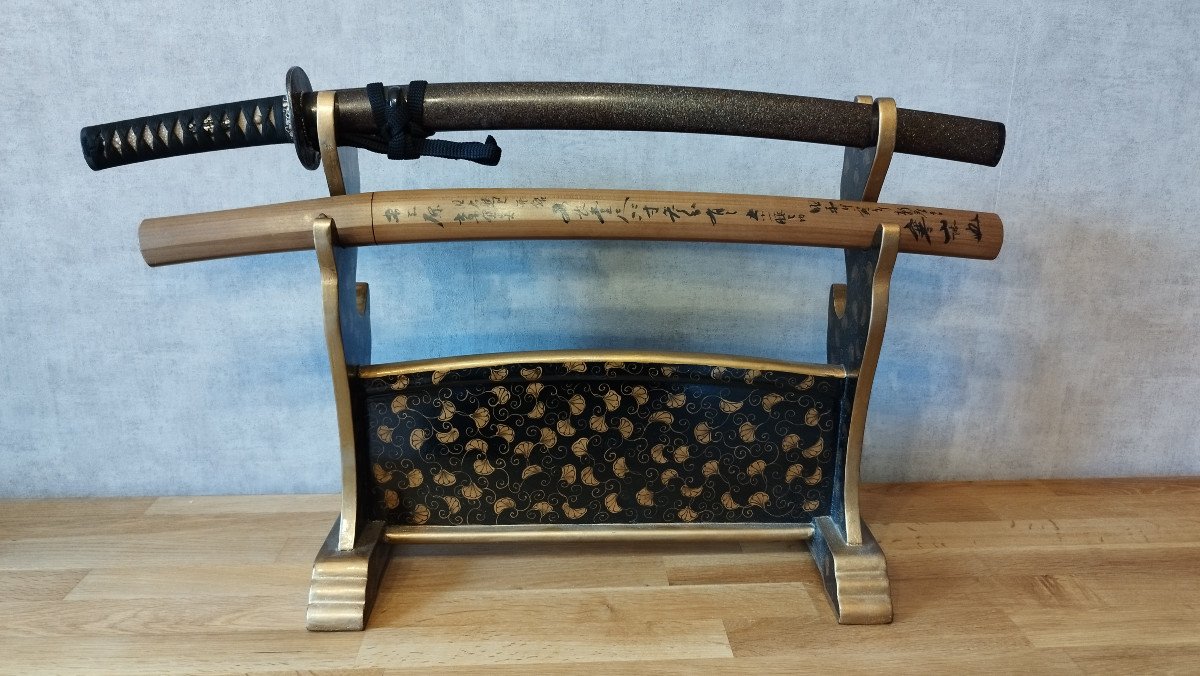

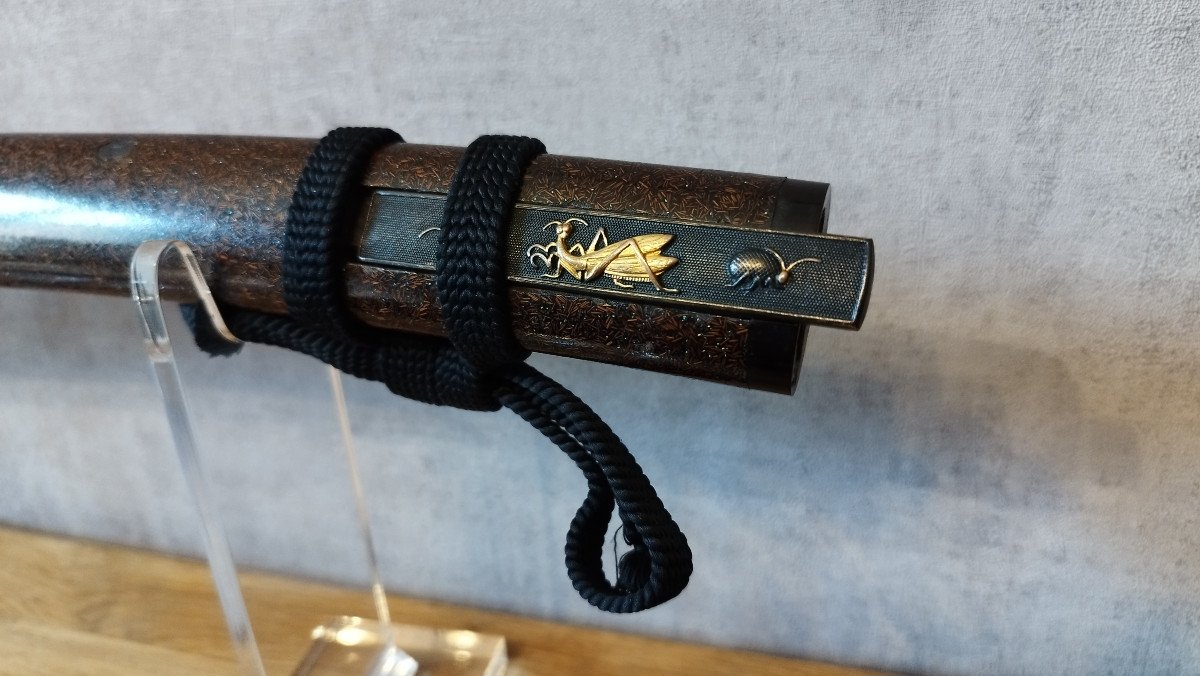





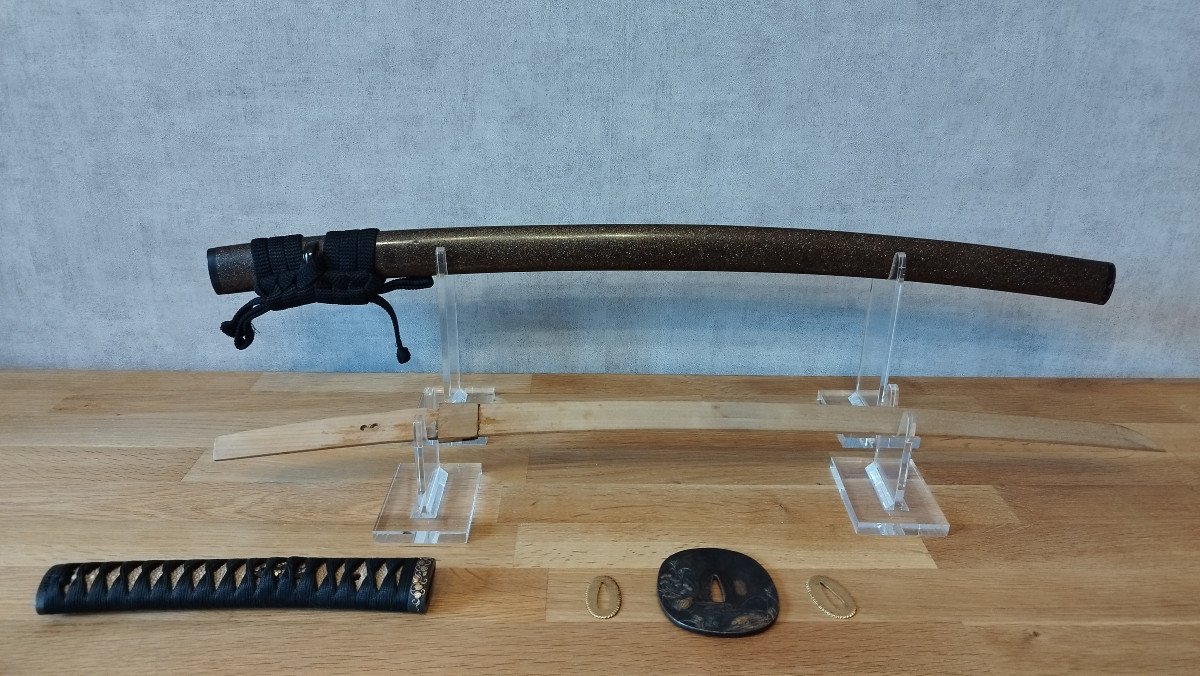













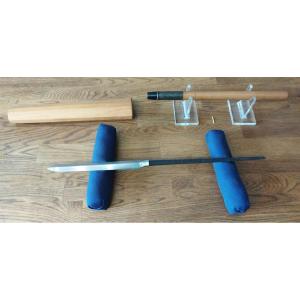

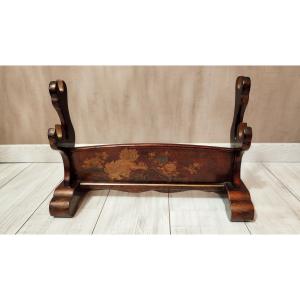
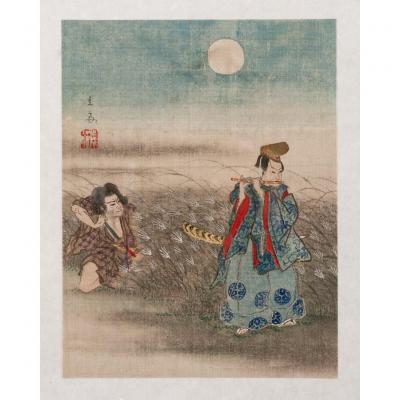



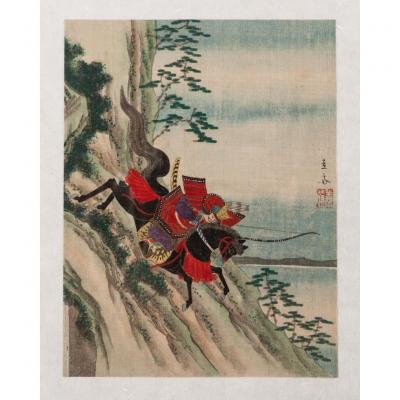


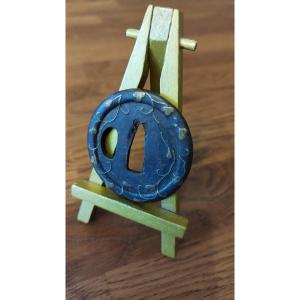

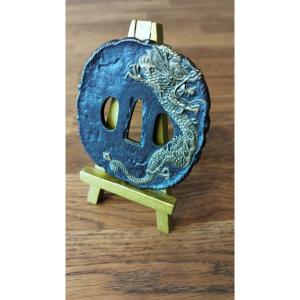








 Le Magazine de PROANTIC
Le Magazine de PROANTIC TRÉSORS Magazine
TRÉSORS Magazine Rivista Artiquariato
Rivista Artiquariato